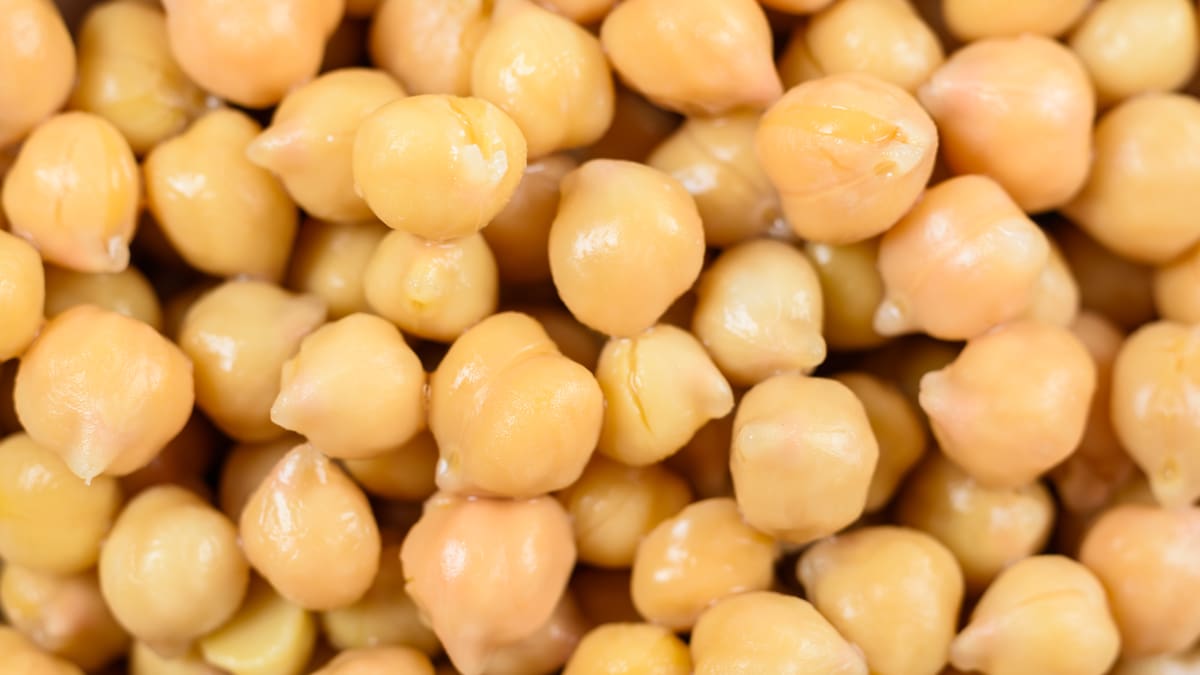Experts are increasingly touting the importance of incorporating plant-based sources of protein in one’s diet. People who eat more plant-based foods, and less red and processed meats, tend to have lower rates of cardiovascular disease, obesity, high blood pressure and other chronic conditions. Recently, a committee of leading nutrition experts recommended that the next version of the Dietary Guidelines for Americans place pulses in the same category as meat to encourage people to eat more of them.
Their fibre helps keep cholesterol in check
Chickpeas have something that animal-based protein sources lack: fibre. One cup of chickpeas contains 12.5g, roughly half the recommended daily amount.
Among its numerous health benefits, fibre can help lower LDL cholesterol – the “bad” form of cholesterol that can build up in arteries, increasing the risk for heart attack and stroke. Soluble fibre, which is abundant in chickpeas, creates a gummy gel in the intestine, said Julia Zumpano, a dietitian at Cleveland Clinic Centre for Human Nutrition. The gel traps bile, a substance that our liver produces from cholesterol to help digest fat, and prevents the body from reabsorbing it. “It naturally lowers the cholesterol in the body,” Zumpano said.
A 2012 study in The British Journal of Nutrition sorted older adults into two groups, one that incorporated two servings of beans, chickpeas, lentils or peas each day and one that ate their normal diet. After two months, the groups swapped diets for another two months. Participants who followed the pulse-based eating plan had roughly an 8% decrease in both total cholesterol and LDL cholesterol, relative to those on the regular diet.
They contain key vitamins and minerals
Chickpeas are rich in iron, a mineral that the body needs to transport oxygen. One cup of chickpeas contains about 60% of the recommended daily amounts for adult men and post-menopausal women, and about 25% of that for menstruating women.
Plant-based iron is less readily absorbed by the body than iron from meat, said Emily Ho, a professor of nutrition in the College of Health and the director of the Linus Pauling Institute at Oregon State University. Including plenty of vitamin C in your diet can help you absorb more iron, Ho said.
Chickpeas are also high in folate, a B vitamin that’s important for cell replication. Everyone needs folate, but it’s especially important during pregnancy, to support the rapid growth of the fetus, Ho said. One cup of chickpeas has 47% of the recommended amount of folate for pregnant women, and about 70% of that for everyone else.

Ready to dig in?
Chickpeas and many other plant-based foods are “incomplete” sources of protein, meaning they are relatively low in at least one of the essential amino acids that combine to form proteins in your body. Fortunately, if you pair chickpeas with grains – particularly whole grains – the two foods complement each other to provide enough of all the amino acids you need, said Henry Thompson, a professor in the College of Agricultural Sciences and director of the Cancer Prevention Laboratory at Colorado State University. He suggested eating chickpea stew with a slice of crusty whole-wheat bread or spreading hummus on a whole-grain tortilla.
This article originally appeared in The New York Times.
Written by: Isobel Whitcomb
©2025 THE NEW YORK TIMES






